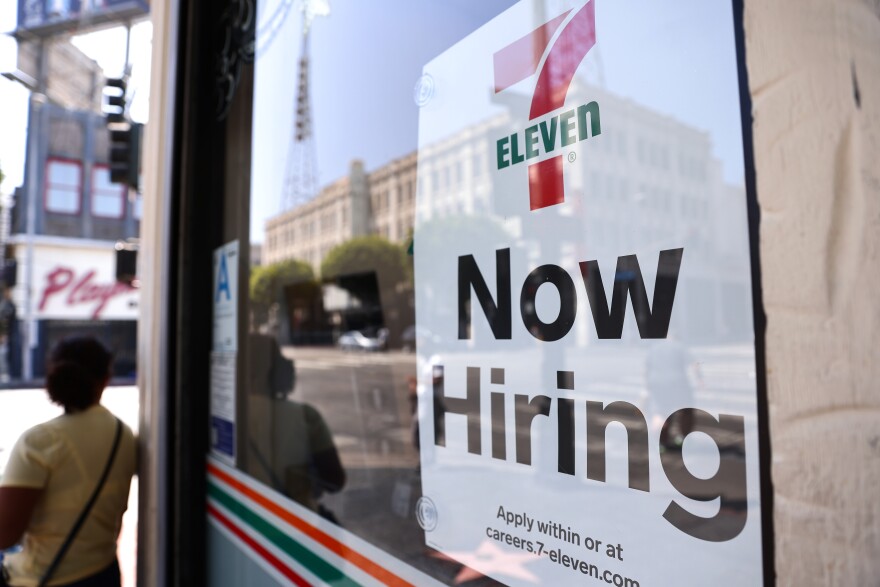With our free press under threat and federal funding for public media gone, your support matters more than ever. Help keep the LAist newsroom strong, become a monthly member or increase your support today.
Want To Rent A California Apartment? You'll Need 2 Full-Time Minimum Wage Jobs

Renters are often advised to spend no more than a third of their income toward housing. Here in California, heeding that advice requires working more than two full-time jobs for someone making minimum wage.
The only state more expensive than California is Hawaii.
To afford a one-bedroom apartment in California, a minimum wage worker would need to clock in around 83 hours a week, the National Low Income Housing Coalition reports.
That disparity means making tough tradeoffs to make ends meet, according to USC public policy professor Gary Painter.
"We know that there is an enormous gap between what people can actually afford in their rent versus not," Painter said. "And the consequence of that is that people are having to make really tragic choices, in terms of being able to pay the rent or eat the food that they know that they need for their family"
Overall, researchers found that 22% of California households — more than 1.3 million — are extremely low income, with a shortage across the state of more than 1 million affordable units.
In L.A.
It's always been hard for minimum wage workers to afford the median rent in Los Angeles on their own. But this latest study highlights how quickly rent is increasing compared to people's wages.
One note: L.A. does have slightly higher minimum wages than the state as a whole. As of July 1, minimum wage in the city of L.A. was raised from $15 an hour to $16.04 an hour. In unincorporated L.A. County the minimum hourly wage went to $15.96 on that date. Those increases are tied to the Bureau of Labor Statistics’ Consumer Price Index.
At the same time, housing costs here remain higher than many other places. The enormous gap between wages and rents highlights how difficult it's been for low-wage workers to stay housed — and why local governments are failing to find new housing for the estimated 66,000 people currently experiencing homelessness in L.A. County.
The lack of available housing is significant and state analysts say L.A. County has for decades built tens of thousands of fewer homes than what's needed to keep up with demand.
Painter noted that in the city of Los Angeles more than 30% of residents are paying more than half their income as rent.
"My colleagues and I did a study in where we interviewed 800 households in South and Central Los Angeles and of that group, 80% of them were paying more than a third of their income as rent," he said.
They asked: "If you received a bill of $400 how would you figure out a way to pay for it? "
Painter said one in five people said they would have no way to cover that cost and as a result would be unable to pay rent, a cycle that risks eviction.
"I think that's the real challenge, that we have is that we have so many families who are just on the edge. If one bill hits in a particular month that's unanticipated, they may not be able to pay the rent that month," he said, "and that could lead to a whole cycle of eviction and having to move and and then in some cases becoming homeless."
David Wagner contributed to this report.








